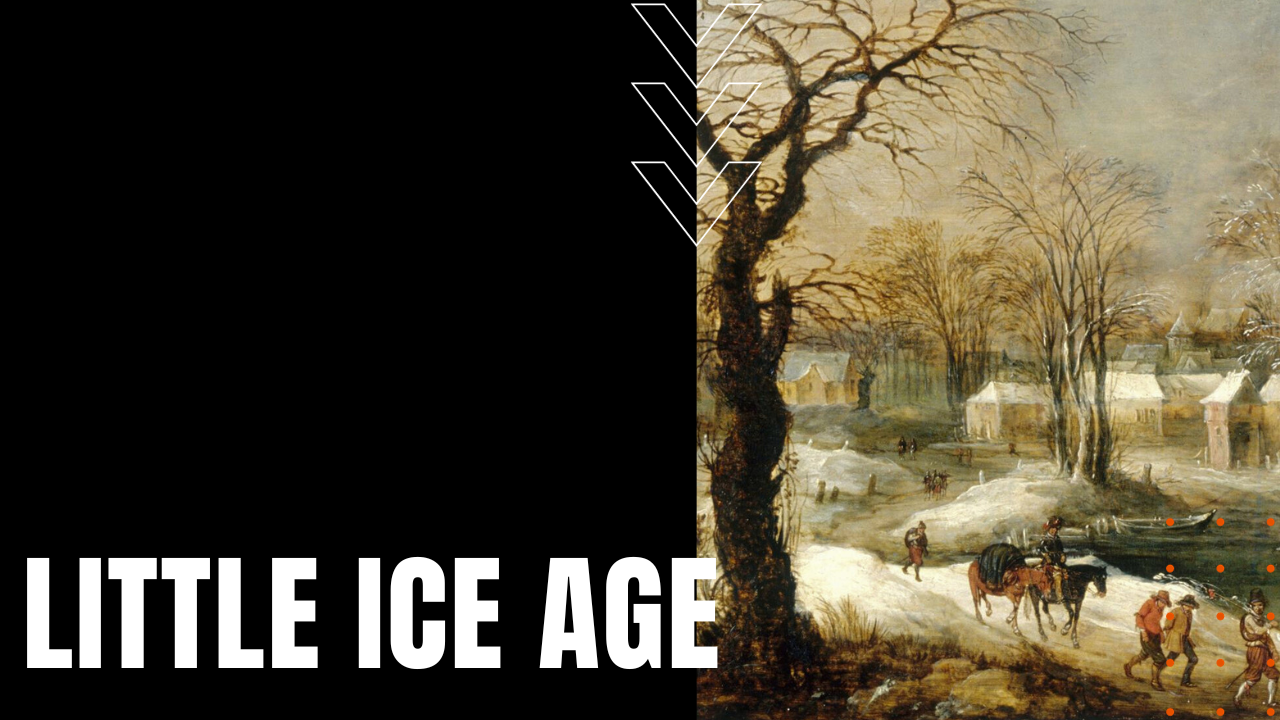The Little Ice Age

During the last 800,000 years of earth history, the planet has witnessed no less than eleven glacial and interglacial periods, with glacial defined as a global drop in average temperatures, with snow from pole to pole, while interglacial is a period of glacial melting and a warming climate. Known as The Little Ice Age, the last glacial event lasted from 1303 to 1850, dropping global temperatures by as much as 3.6 degrees Fahrenheit, while disrupting social, economic, and intellectual progress throughout the world.
16th Century Peak
Reaching its peak in 1570, theories abound regarding its causal origins, ranging from decreased sunspot activity to a spike in active volcanos, which in turn imposed changes in oceanic currents that altered pressures on continental shelves. Others point to a precipitous decline in North American indigenous populations during the Age of Exploration—felled by foreign diseases—which, according to Quaternary Science Reviews, killed an estimated 56 million people, leading to a dramatic period of reforestation and a drastic reduction in atmospheric CO2 levels.
Society Mayhem
No matter its causal links, lower temperatures impacted societal orders everywhere on earth, including the collapse of the Ming Dynasty in 1644 China, which failed in part by waves of famine brought about by failing harvests. In Europe, rivers, lakes and harbors froze solid, leading to “frost fairs” on the Thames River, when fairgrounds and merchants spread across London’s tideway. Men, women and animals died of hypothermia, while in 1588, the Spanish Armada was lost to an Arctic hurricane. After the wet and cold winter of 1665, vegetation flourished before turning into tinder-dry accelerant in the rainless summer of 1666, contributing to the Great Fire of London that same year.
Food Riots and More
Food shortages led to panics, uprisings and food riots, along with a spike in witch trials during a time before science, when peasants and nobles alike blamed witches for failing harvests. Persisting well into the mid-19th century, the Little Ice Age had a profound impact on trade, feudal societies and global exploration, with one notable exception. Trees took longer to mature in the cold climate, resulting in denser wood that produced the exceptional sound qualities of violins made by luthiers such as Stradivarius and Guarneri, making the Little Ice Age, a time of intense adaptation for humans everywhere.
